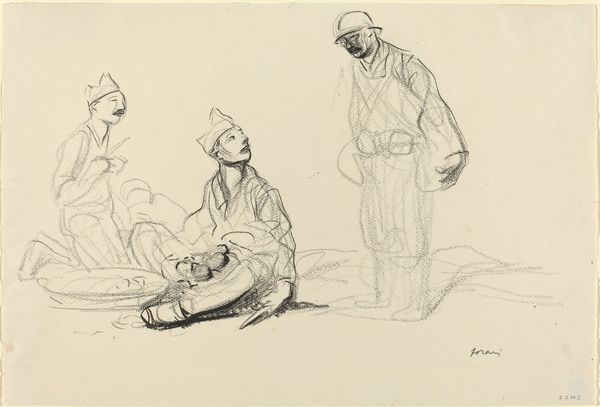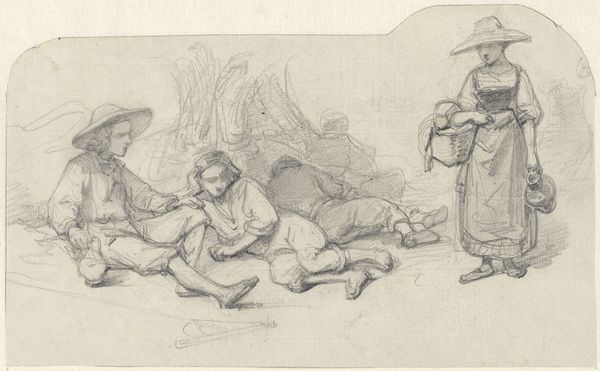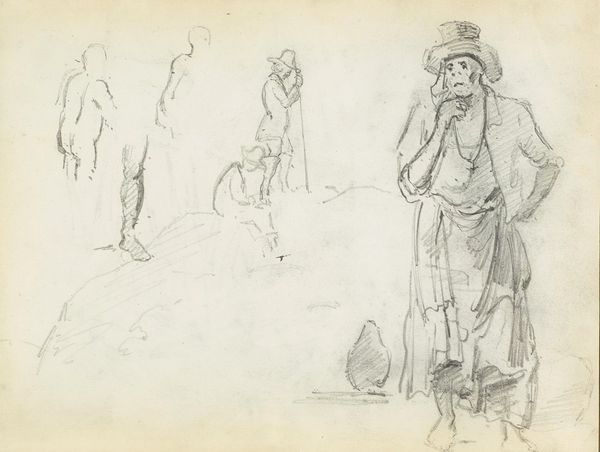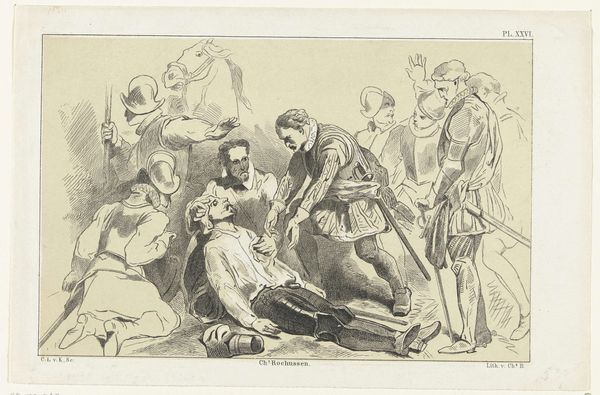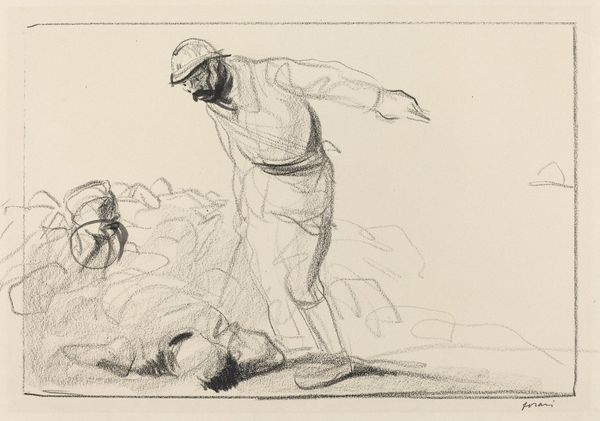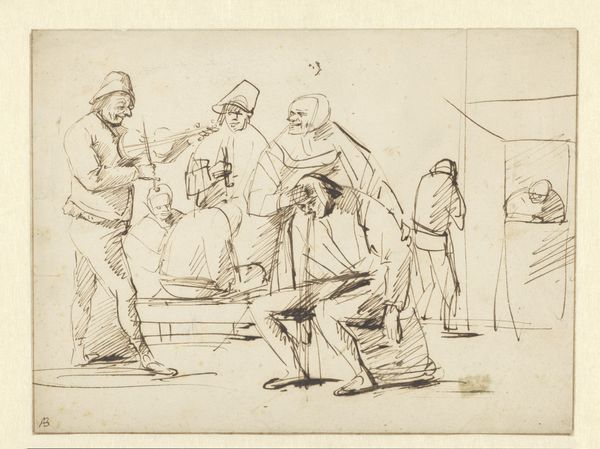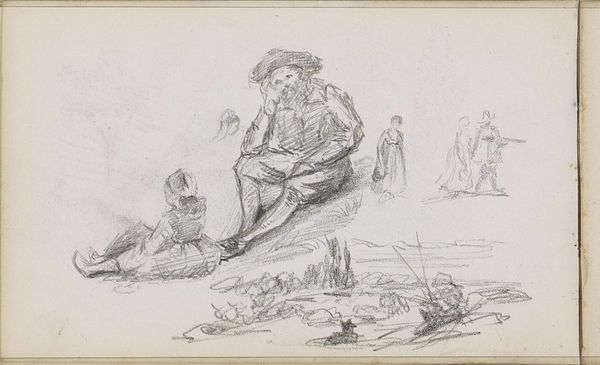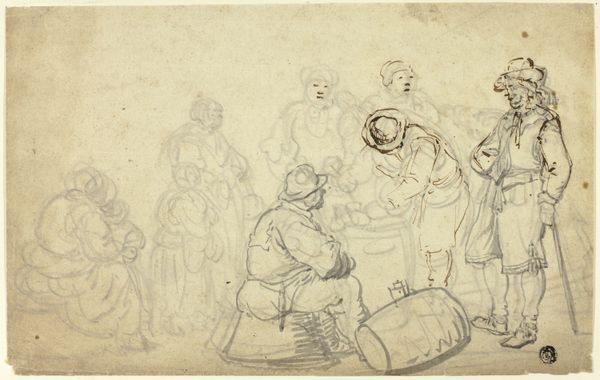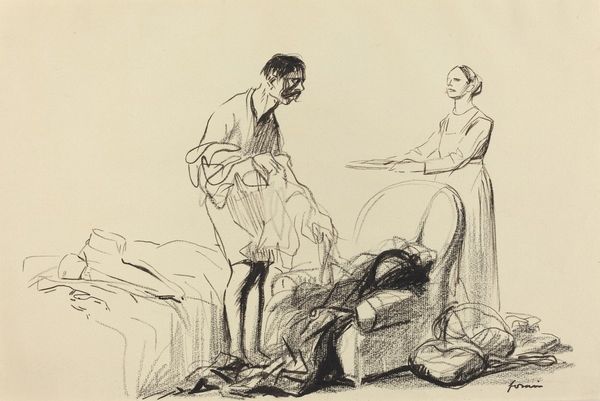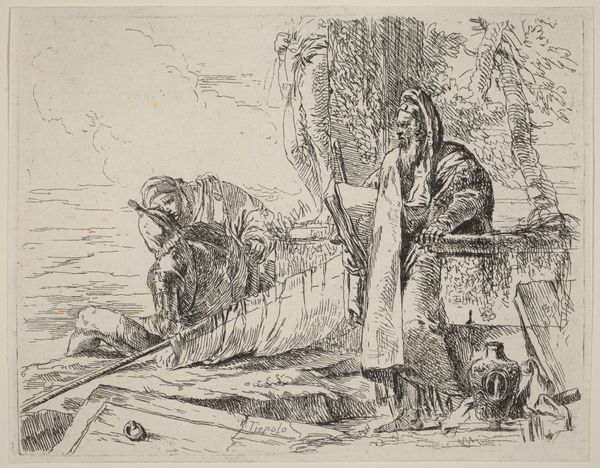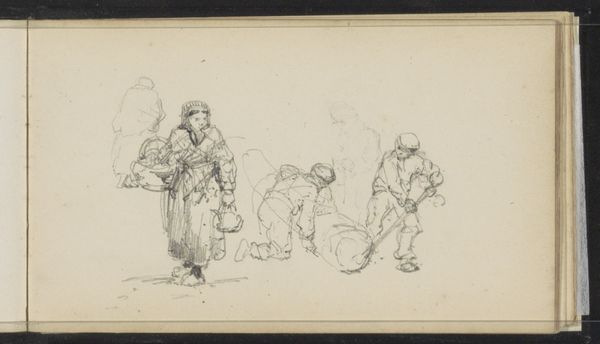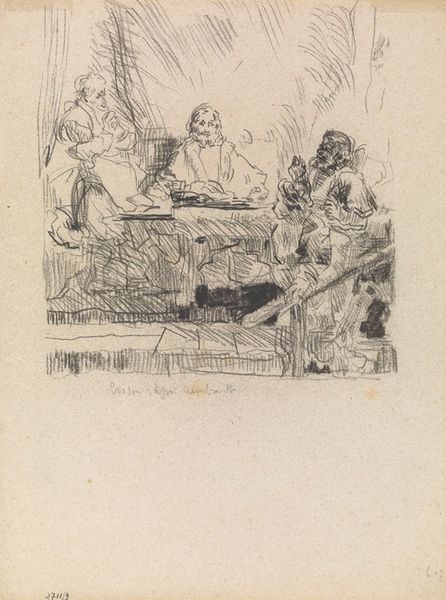
Copyright: Public Domain: Artvee
Curator: Here we have Jean-Louis Forain's drawing, "The Chefs," created between 1914 and 1919. It's rendered in pencil on paper. Editor: My first thought? Spare. Utterly spare. It's a whisper of a scene, these chefs in, I presume, some field kitchen during the First World War, all in graphite. Curator: Exactly. Forain worked extensively as an artist during wartime, producing drawings that captured the atmosphere on the front lines. We should think about the means of distributing these images: newspapers, prints, the affordable reproduction creating widespread engagement. How might their food have tasted at the time of war? Editor: Knowing Forain’s cynical wit, I imagine gritty with irony. The loose sketching, it creates a dreamlike feeling, doesn't it? Like remembering, not experiencing. That central figure, his gaze... He is asking heaven or some commander what it takes. The light, insubstantial medium contrasts profoundly with the grit of the conflict. Curator: A point very well taken. The technique feels hurried, immediate. It shows an artist embedded with his subject and working to meet news deadlines with quick art production. The softness belies the hard realities being represented: issues of nutrition, field conditions, material support for frontline chefs—aspects easily romanticized if removed from their context of the conflict itself. Editor: Yes, yes. One can almost smell the faint acrid waft of the battle zone seeping into the camp. And note, it isn't a staged moment. It isn’t about some grand display, but quiet, urgent sustenance with only these few utensils. It gives an impression of genuine work that connects all humanity, war or peace. Curator: So true! It’s fascinating to consider what stories Forain chooses to prioritize during such large conflicts, isn't it? This piece reflects everyday necessities like access and provisions and food under the extreme circumstances. Editor: Precisely. "The Chefs"—more like "The Survivors," etching out a shared plate of food that’s been acquired at who knows what cost... Curator: Considering this through a lens of process and materiality definitely gives greater weight and reality to the work, doesn’t it? Editor: Yes, it deepens our appreciation beyond mere aesthetics and provides a crucial story within these minimal lines. It certainly adds to the work overall in the scene.
Comments
No comments
Be the first to comment and join the conversation on the ultimate creative platform.
